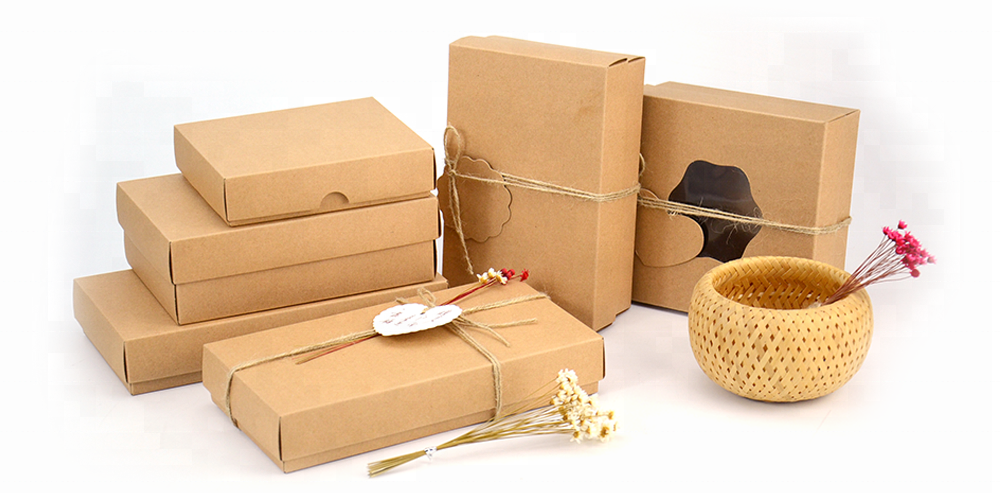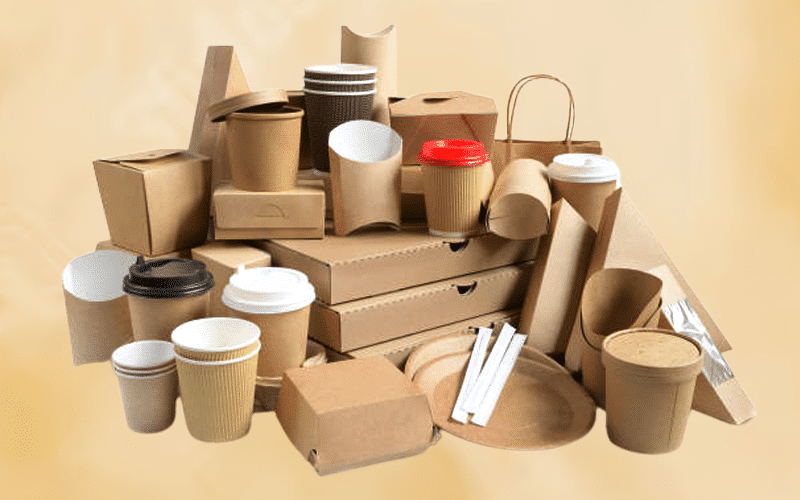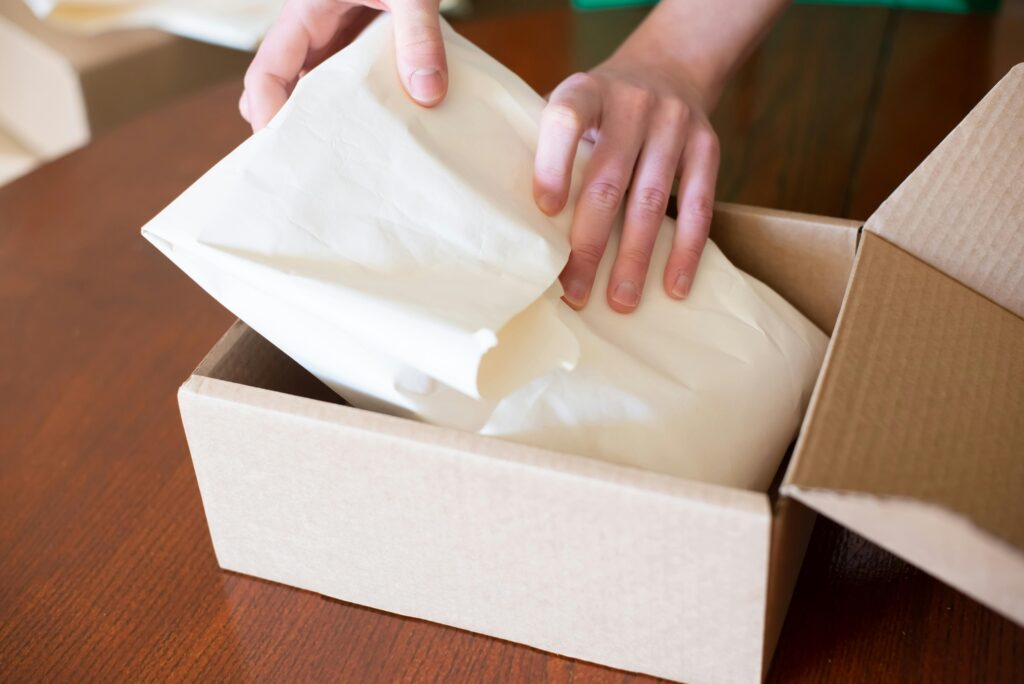
The function of packing materials often goes overlooked, even with the growing globalization of our society. Whether a consumer makes a straightforward online order or a business sends a shipment, packing materials are important for protecting the goods during transportation, storage, and delivery. Packing materials are protective barriers which safeguard the item from external pressure, drops, vibrations, temperature shifts, and more. The rising use of e-commerce, conducted international trades, and increased migration have all contributed to the demand for advanced and efficient packing solutions.
The Evolution Of Packing Materials
The evolution of packaging has come a long way from its origins. In the past, people would use animal skin, leaves, and woven baskets to store and transport goods. As trade began to develop between different societies, there was a need for more efficient and protective containers. Items were commonly transported in wooden boxes, pottery, metal, or glass containers. The Industrial Revolution was a turning point in the history of packaging where products such as cardboard and paperboard were introduced.
As trade and mass production expanded, there was a challenge in meeting the lightweight, protective, and cost-effective requirements for goods. The 20th and 21st centuries witnessed the development of synthetic materials like plastic, foam, and composite wraps, which provided enhanced efficiency in packaging. Today, the focus is on environmentally friendly and biodegradable materials, reinforcing the fact that changes in economic, technological, and ecological relationships still impact the evolution of packaging.

Classification And Applications Of Packaging Materials
Each type of packing materials serves a distinct purpose. Perhaps the most widely known and easily identified would be the cardboard box. They are protective outer coverings for items of all shapes and sizes, and are both protective and lightweight. With air-filled pockets, bubble wrap provides superb cushioning for shocks and vibrations, making it perfect for fragile or breakable items. Equipment such as sensitive laboratory apparatus can be wrapped and protected using soft layer commonly referred to as foam sheets and rolls. Although packing peanuts are controversial because of their environmental implications, they have been used for many years to fill voids in packages to prevent shifting during transport.
Air pillows are commonly used in online shopping for lightweight space fillers, offering a more eco-friendly option. In the business world, thick sheets and bundling films are often used for covering bundles and securing goods on pallets because they provide protection and stability. Many people prefer kraft papers, newsprints, and corrugated rolls for wrapping products or providing shock absorption. Every material has its pros and cons, and the decision is made based on the item’s weight, its distance to be shipped, and the mode of transport.
The Importance Of Packing Materials In E-Commerce
The packing process has gained tremendous importance due to the rise of e-commerce. Customers expect a package to be delivered within a reasonable timeframe, shipping damage, can result in losses, eroding trust, and brand reputation damage. Thus, packaging has to cater to brand perception and functionality. A good impression is crucial, often determining whether a customer returns. Thoughtful and professional packaging builds trust with customers; it often is the first thing they notice about a brand.
Many companies are now adding branded logos, inserts, and eco-friendly messages to their packages. While the outer box must remain simple for security and cost reasons, inner packaging has become a space for creativity. This offers additional opportunities to add value to the brand’s first impression. On the flip side, e-commerce companies also need to address the question of balance between eco-friendly shipping materials and their presentation. Thus, materials that can be recycled, composted, or are biodegradable are on the rise.
The Environmental Impact And Sustainable Options
Environmental impacts from the packaging industry is one of the most important and emerging conversations being had today. Companies are transitioning from using plastic bubble wrap, laminated boxes, and styrofoam peanuts to more sustainable options because of their availability. This shift is being made by both companies and consumers. Biodegradable packing peanuts made from cornstarch are effortlessly dissolvable in water. Other sustainable options garnering attention include recycled paper products, mushroom-based foam, and cellulose wraps. Some companies have adopted a waste reduction technique called closed-loop systems through the collection and reuse of packing materials.
Greenhouse plant-based packaging, as well as compostable mailers and recycled cardboard are being adopted by mainstream retailers. There is a shift in demand from consumers and regulatory bodies driving industries to design their products with minimalism, recyclability, and carbon footprint in mind. It can be observed that the shift towards sustainable practices is transforming the materials used for packing.
Custom Packaging Solutions For Specific Industries Needs
Different sectors have unique requirements for packing. In the electronics industry, parts are sensitive to electrical and physical shocks; therefore, anti-static wraps and foam molds are protective packing materials used to shield the parts. For the pharmaceutical industry, product integrity must be maintained during shipping and therefore uses temperature controlled insulating materials. Food delivery services use insulated liners, gel packs, as well as moisture barriers to keep perishables fresh and safe. Luxury brands use premium packaging to enhance the perceived value of their products, incorporating features like magnetic closures and embossed finishes. Machinery and equipment are often placed in waterproof barriers during long distance shipping, and then packed in wooden crates which are fastened securely with metal.
As a result, packaging has evolved into a distinct industry, with businesses often seeking help from specialists to design solutions tailored to their logistics and branding needs. For instance, modern packing materials integrate features like temperature sensors for added security and user engagement.

Modern Packaging Challenges And Innovations
The shipping industry still faces many challenges, even with new hyped-up technologies like AI. Next and same day delivery services require a tight level of intricate logistics system coordination and speed. Many customers lose satisfaction when ordered items arrive damaged due to poor packing. Furthermore, due to growing regulations of sustainable environmental responsibility, companies must also balance cost-effective practices stripped of excessive filler packing. Some attempts to solve these issues include automated box-sizing machines, reusable shipping containers, and materials embedded with QR codes that track shipments. Protective shipping materials are now being researched to create items which are reusable and biodegradable or sometimes even edible. Innovations of this nature demonstrate that packing materials are evolving towards the model where they will transform from mere disposable items towards critical elements throughout an item’s lifecycle and customer journey.
Frequently Asked Questions
1. What Is the most commonly used packing material for fragile items?
Because of bubble wrap’s popularity as a protective covering, it remains one of the most commonly used packing materials for shipment of delicate items as it cushions and absorbs shocks during transit. Glass, ceramic, or electronic items, in particular, are safeguarded beautifully with air-filled bubble wraps.
2. Are packing peanuts environmentally friendly?
The use of styrofoam packing peanuts is environmentally irresponsible because they are not biodegradable and challenging to recycle. The same packing peanuts made of cornstarch or other plant based materials are greener because they are biodegradable as well as water-soluble.
3. How can I reduce waste when using packing materials?
Reusing boxes, bubble wrap, and paper reduces waste significantly. One other way to economize on waste is to use recyclable or biodegradable materials. Also, not over-packing and choosing the smallest container or box possible for the items is helpful. Several companies offer packable systems that can be refunded or refilled.
4. What materials should I avoid while packing electronics?
For electronics, anti-static foam, bubble wrap, and foam inserts are ideal. These materials protect devices from physical shocks while also preventing electrostatic discharge which could harm the intricate electronics inside. These components are sensitive to static electricity.
5. Are packing materials that are environmentally friendly effective as less eco-friendly ones?
Indeed, numerous eco-friendly packing materials have mushroom foam and paper padding which not only protect the environment but also offer exceptional cushioning and shock absorbing capabilities.





